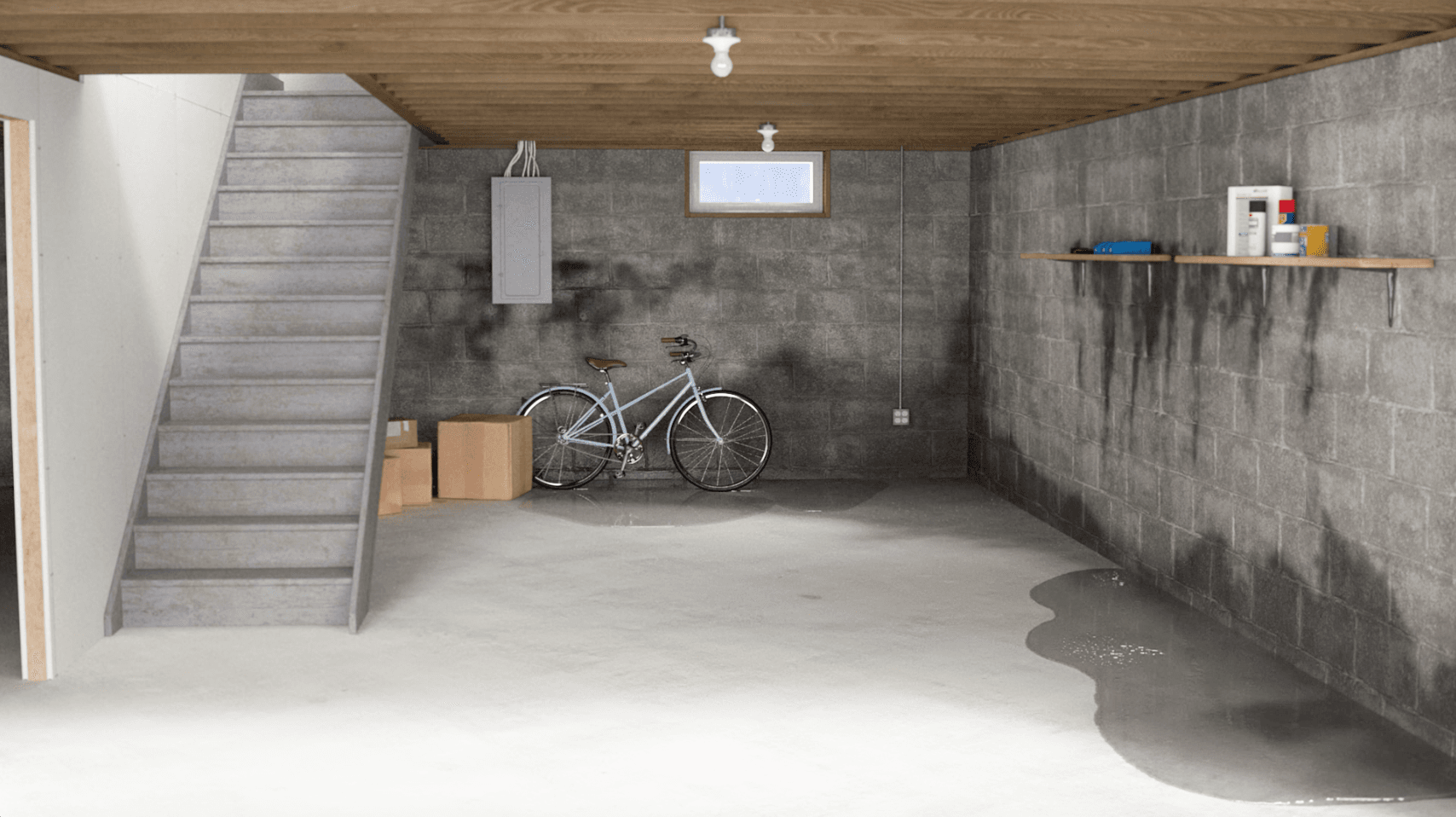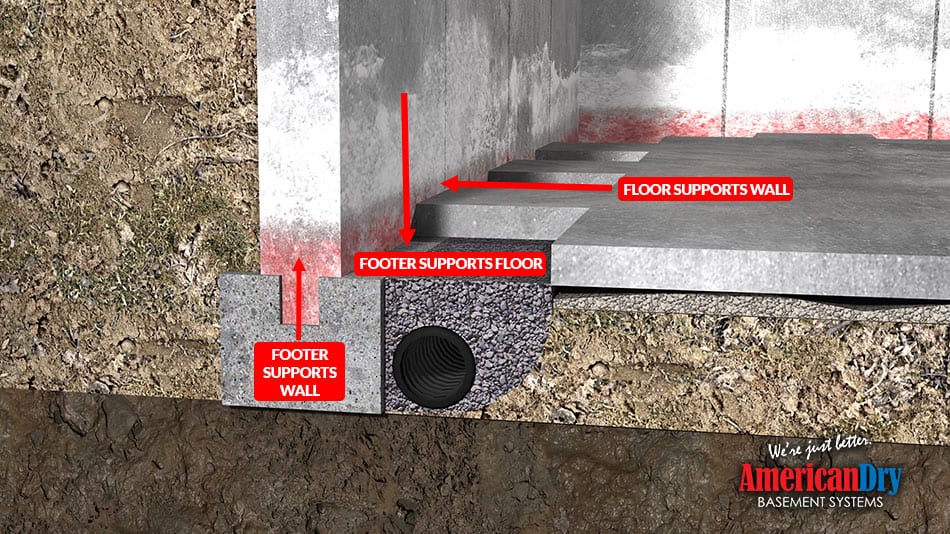Foundation Waterproofing Toronto: Comprehensive Solutions for a Dry Foundation
Foundation Waterproofing Toronto: Comprehensive Solutions for a Dry Foundation
Blog Article
Proven Techniques for Effective Cellar Drip Repair Work and Avoidance
Dealing with cellar leakages successfully needs both a critical approach and an understanding of tested techniques. The initial action entails a thorough evaluation to identify the exact resources of wetness invasion. This is adhered to by using high-grade sealers and hydraulic cement to seal fractures, to name a few fixing methods. Nonetheless, avoidance is just as essential; preserving appropriate drain systems and managing interior moisture are essential parts. Consideration should also be provided to ongoing monitoring and timely maintenance. What are the vital methods that make sure these solutions not only fixing however also stop future leakages, eventually preserving your basement's stability?
Identifying Cellar Leak Sources
Identifying the sources of cellar leaks is an essential action in successfully protecting against and resolving water damages. A comprehensive analysis starts with checking out both the exterior and interior of the residential property. On the surface, inadequate water drainage systems, such as malfunctioning seamless gutters and downspouts, can bring about water pooling near the structure, raising the risk of infiltration. In addition, landscape grading that slopes towards the building exacerbates this problem, enabling water to stream straight to the basement walls. Inside, cracks in the foundation walls or floors prevail offenders, often resulting from hydrostatic stress buildup or architectural settling in time.

Essential Devices and Materials
Repairing basement leakages effectively needs a well-stocked toolkit and the right products to ensure long-lasting remedies. An important tool is a top quality caulking weapon, which permits for specific application of sealers around joints and cracks.
A dependable wet/dry vacuum is crucial for initially eliminating water from the basement, enabling a completely dry workplace. Furthermore, a wetness meter is crucial to assess the dampness levels prior to and after repair work, making certain that wetness problems are sufficiently dealt with. High-grade waterproofing sealants or membranes are vital for stopping future leaks, developing a durable barrier against water invasion.
Safety should not be ignored; protective gear such as handwear covers, goggles, and a mask are crucial to secure against dirt and chemicals. An utility knife and wire brush are invaluable for prepping surface areas to make certain ideal attachment of sealants and patches. These materials and devices prepared for effective cellar leakage fixing, boosting resilience and durability versus future water damage.
Step-by-Step Repair Strategies
With the needed devices and materials at hand, useful reference resolving basement leakages includes a methodical method to make sure reliable fixings. Begin by identifying the leak's resource, which frequently calls for a detailed inspection of walls, floorings, and prospective entry points for moisture. Once identified, tidy the damaged area thoroughly to eliminate dirt, debris, and any type of loose product that could restrain the repair procedure.
Next, if the leakage originates from a crack, utilize a sealant especially made for concrete surface areas. Apply the sealant with accuracy, ensuring it penetrates deep right into the gap to develop a watertight bond. For larger crevices, consider utilizing hydraulic cement, which broadens as it establishes, supplying a durable seal.
In instances where the leak is because of faulty joints or pipe infiltrations, make use of an adaptable sealer that can accommodate small movements and changes. Use it kindly to cover the entire joint circumference, making sure full insurance coverage.
Precautionary Actions to Think About
Preventative upkeep is critical in protecting your basement from future leaks and possible water damages. In addition, rating the landscape to slope away from the foundation can avoid water buildup around your home.
Securing prospective entry factors is an additional crucial preventative step. Applying waterproof sealant to the inside and exterior walls of your basement can develop an efficient obstacle versus moisture infiltration. Evaluating and repairing any type of noticeable cracks in the foundation without delay is essential to avoid small concerns from snowballing into significant troubles.
Mounting a sump pump system is a positive method to managing water access, particularly for homes located in locations susceptible to hefty rainfall or high water tables. A sump pump can successfully eliminate collected water, preventing it from getting to crucial degrees. Ultimately, making certain that cellar doors and windows are appropriately secured and fitted with home window wells can better shield against undesirable water access.
Surveillance and Maintenance Tips
Routine surveillance and maintenance of other your basement are crucial to ensure its lasting stability and capability. Resolving small splits rapidly with appropriate sealers can stop water from permeating in, avoiding possible look at this site damage.
Inspect the cellar's humidity degrees routinely, as too much wetness can result in mold and mold growth. Use a hygrometer to preserve humidity levels in between 30-50%, and consider installing a dehumidifier if needed. Ensure that sump pumps are functional, examining them semi-annually and evaluating them by pouring water into the sump pit to verify activation.

Regularly keeping these elements not only safeguards your cellar yet likewise extends its performance, protecting your investment and guaranteeing a dry, functional room for many years ahead.
Verdict
To conclude, the reliable repair service and avoidance of basement leakages require a comprehensive strategy including comprehensive inspection, proper sealing products, and critical drain remedies. Utilizing premium sealants and hydraulic concrete guarantees the toughness of repair work, while correct landscape grading and gutter upkeep protect against future wetness breach. Regular monitoring of moisture levels, coupled with the setup of sump pumps in susceptible locations, further strengthens the cellar versus leaks. Regular alertness and upkeep are critical in sustaining a completely dry and protected cellar setting.
What are the crucial techniques that make certain these remedies not only repair service yet also stop future leakages, inevitably maintaining your cellar's stability?
Identifying the sources of basement leakages is an essential step in properly protecting against and addressing water damages. These tools and products lay the groundwork for reliable basement leak fixing, enhancing sturdiness and strength against future water damages.
With the needed tools and products at hand, attending to cellar leakages involves a systematic approach to make certain reliable repairs.Preventative upkeep is vital in securing your cellar from future leaks and possible water damages.
Report this page